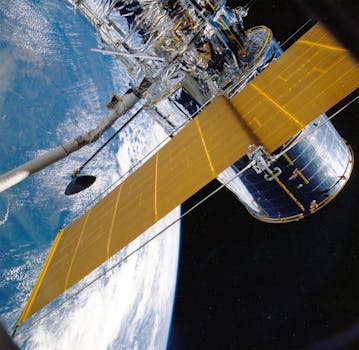LEO Satellites Revolutionizing Global Connectivity – LEO Satellites

LEO Satellites Revolutionizing Global Connectivity – LEO Satellites
LEO satellites are at the forefront of a revolution in global connectivity. With the increasing demand for high-speed, low-latency internet connections, LEO satellites are playing a crucial role in providing reliable and efficient communication services. In this article, we will delve into the world of LEO satellites and explore their impact on global connectivity.
LEO satellites operate in low Earth orbit, at an altitude of approximately 160 to 2,000 kilometers above the Earth’s surface. This proximity to the Earth allows them to provide high-speed connections with low latency, making them ideal for real-time communications. LEO satellites are being used for a variety of applications, including satellite internet, Earth observation, and navigation.
History of LEO Satellites
The concept of LEO satellites dates back to the 1960s, when the first satellites were launched into low Earth orbit. However, it wasn’t until the 1990s that LEO satellites began to gain traction as a viable option for commercial communications. The launch of the Iridium satellite constellation in 1998 marked a significant milestone in the development of LEO satellites, providing global coverage and high-quality voice and data services.
In recent years, there has been a surge in the development and launch of LEO satellite constellations, with companies like SpaceX, OneWeb, and Amazon’s Kuiper Systems leading the charge. These constellations are designed to provide high-speed, low-latency internet connections to remote and underserved communities around the world.
Benefits of LEO Satellites
LEO satellites offer a range of benefits, including high-speed connections, low latency, and global coverage. They are also more cost-effective than traditional geostationary satellites, which operate at much higher altitudes. LEO satellites are also more environmentally friendly, as they require less energy to launch and operate.
One of the most significant benefits of LEO satellites is their ability to provide internet access to remote and underserved communities. Many parts of the world lack access to reliable and efficient internet connections, hindering economic development and social progress. LEO satellites are helping to bridge this digital divide, providing high-speed connections to communities that need them most.
Challenges and Limitations
While LEO satellites offer many benefits, there are also challenges and limitations to their use. One of the main challenges is the high cost of launching and operating a LEO satellite constellation. The development and launch of a single satellite can cost tens of millions of dollars, and the cost of launching a constellation of satellites can run into billions of dollars.
Another challenge is the risk of space debris. LEO satellites are designed to operate for a relatively short period, typically between 5 to 10 years. At the end of their lifespan, they are decommissioned and removed from orbit, but there is a risk that they can collide with other satellites or space debris, causing damage or destruction.
Conclusion
LEO satellites are revolutionizing global connectivity, providing high-speed, low-latency connections to remote and underserved communities around the world. While there are challenges and limitations to their use, the benefits of LEO satellites far outweigh the costs. As the demand for reliable and efficient communication services continues to grow, LEO satellites will play an increasingly important role in providing global connectivity.
With the continued development and launch of LEO satellite constellations, we can expect to see significant improvements in global connectivity in the coming years. As LEO satellites continue to transform the way we communicate and access the internet, it’s exciting to think about the possibilities that this technology will bring.






